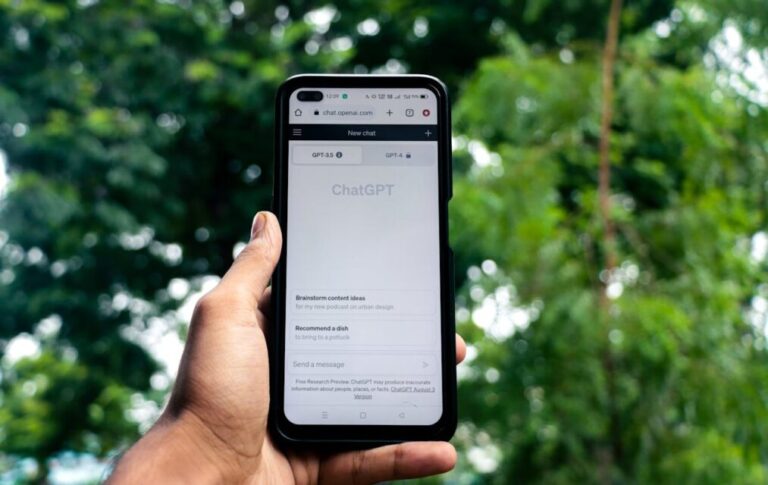Let’s get one thing straight: I love ChatGPT. It’s helped me outline articles, brainstorm topics, and yes, even write a few tricky emails I didn’t have the brain space to craft myself. But lately, I’ve been noticing something else. Not just in my circles, but in conversations online, in DMs, even in therapy forums.
People aren’t just using ChatGPT to lighten their workload—they’re using it to avoid something far more intimate: emotional labor.
You know what I mean. The kind of work that doesn’t show up on timesheets but leaves you drained anyway. Emotional labor is the energy it takes to show up with empathy, to self-reflect, to have uncomfortable conversations, to hold space for someone’s pain without trying to fix it. It’s not glamorous, but it’s essential to real connection.
And now, some folks are offloading it to AI.
Here are five subtle but real ways it’s happening.
1. Using ChatGPT to write apologies instead of sitting with discomfort
I get it. Apologizing is hard. Especially when we’re in the wrong and know it. The emotional effort it takes to own up, find the right words, and communicate remorse can feel overwhelming.
So what do some people do? They type: “Write an apology to my girlfriend for not showing up to her birthday dinner.”
Sure, the resulting message might sound polished. It might even get the job done. But something’s missing. That vulnerable, shaky honesty that comes when we write from the gut. The kind that says, “I really hurt you, and I’m sitting with that.”
Emotional labor means staying in the discomfort long enough to learn something. Skipping that step by outsourcing the words to AI can feel like a shortcut, but it robs the other person of something real: you.
2. Replacing emotional check-ins with ChatGPT-scripted responses
A friend texts you: “I’m having a rough day.”
Instead of tuning into your body and asking, “What do I want to say to let them know I care?”, you paste it into ChatGPT: “What’s a supportive thing to say to a friend who’s feeling down?”
You get back something like: “I’m so sorry you’re going through this. I’m here for you, always.”
Technically perfect. Emotionally hollow.
Support isn’t about saying the exact right thing. It’s about being present. It’s about taking a second to actually feel what you imagine your friend is feeling—and then letting your words reflect that. Not a bot’s.
We know from research that empathy strengthens relationships more than perfectly crafted words ever could. It’s not the language that heals. It’s the intention behind it.
3. Delegating hard conversations to ChatGPT
Breakup texts. Firing emails. Confronting a roommate. These moments demand our presence, even when we want to run.
There are now posts online—thousands of them—from people asking ChatGPT to craft these conversations for them. Not just to get the wording right, but to avoid doing the actual emotional lifting. The fear, the guilt, the possibility of hurting someone—ChatGPT takes that weight off. But at a cost.
Emotional labor means showing up even when it’s hard. It means learning how to say something honest without being cruel. That skill only develops through practice—not outsourcing.
When we let AI do the talking, we might dodge discomfort, but we also miss the chance to grow up a little.
4. Seeking instant emotional validation instead of self-reflection
One of the most subtle shifts I’ve seen? People using ChatGPT as an emotional mirror. They type in: “Was I wrong for not inviting my friend to my wedding?” or “Write something to help me feel less guilty about quitting my job.”
What they’re often looking for isn’t information—it’s absolution. Something or someone to say: “You’re okay. You did the right thing.”
But here’s the thing, emotional growth rarely comes from being told we’re fine. It comes from sitting with the grey areas. From asking ourselves, Why does this bother me? or What does this decision say about my values? That kind of reflection can be unsettling.
ChatGPT is brilliant at echoing back what we feed it. But it can’t hold us accountable. It won’t challenge our biases unless we ask it to. And even then, it doesn’t feel like the inner reckoning real self-awareness requires.
5. Using ChatGPT to mimic emotional insight instead of cultivating it
This is the trickiest misuse of all. The one I see among thoughtful people. You can ask ChatGPT to write like a therapist. To summarize Jungian archetypes. To explain emotional intelligence. It will do it with nuance and clarity.
But reading about emotional insight isn’t the same as living it.
Emotional labor asks us to integrate what we learn. Not just understand boundaries, but enforce them. Not just talk about vulnerability, but let ourselves be seen.
AI can imitate the language of insight, but not the messy, raw, human process it takes to actually grow.
Just like reading a fitness plan isn’t the same as doing the pushups, consuming emotional language doesn’t mean we’ve done the inner work.
ChatGPT is a tool, not a therapist
Let me be clear: ChatGPT isn’t the villain. It’s neutral. It mirrors us.
But emotional labor—the kind that heals, deepens, and connects—can’t be outsourced. It has to come from our lived experience. Our emotional bandwidth. Our willingness to be present.
So by all means, use ChatGPT to brainstorm gift ideas, clarify your thoughts, or make your language more compassionate. But don’t let it replace the sacred, stumbling work of being human.
Because while AI can help us sound more caring, only we can be more caring.
And that’s the kind of labor worth doing.
